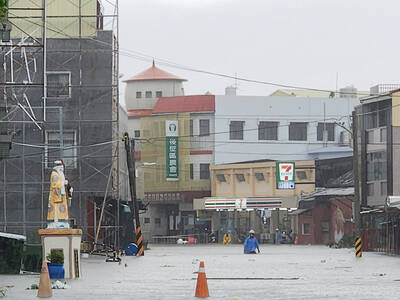The death toll in the swine flu pandemic has passed the 1,000 mark, with 1,154 deaths since the outbreak was uncovered in April, data published yesterday by the WHO showed.
Swine flu now reaches 168 countries and territories, the WHO said in its latest update on its Web site.
As of last Friday, Azerbaijan, Gabon, Grenada, Kazakhstan, Moldova, Monaco, Nauru, Swaziland, and Suriname were added to the ranks of countries reporting laboratory confirmed cases of influenza H1N1.
A little more than a week ago on July 27, the WHO reported 816 deaths around the world.
The total number of laboratory confirmed infections worldwide reached 162,380, but the figure understates the full number since indvidual cases no longer have to be tested or reported.
Most of the deaths — 1,008 —- have occurred in the WHO’s America’s region, encompassing North and South America and including Mexico and the US, the countries where the H1N1 pandemic strain first appeared.
Sixty-five deaths were reported in the WHO’s regional office for South East Asia and 39 in its Western Pacific region since the outbreak began. Forty-one were reported in Europe.
By comparison, seasonal flu causes about 250,000 to 500,000 deaths a year, and results in between 3 million and 5 million cases of severe illness, the WHO said.
Meanwhile, Thai health authorities yesterday announced 16 more swine flu fatalities in the week up to Sunday, bringing the country’s death toll to 81.
Malaysia’s health ministry yesterday confirmed that four people infected with swine flu have died, raising the country’s toll to 12.

Rainfall is expected to become more widespread and persistent across central and southern Taiwan over the next few days, with the effects of the weather patterns becoming most prominent between last night and tomorrow, the Central Weather Administration (CWA) said yesterday. Independent meteorologist Daniel Wu (吳德榮) said that based on the latest forecast models of the combination of a low-pressure system and southwesterly winds, rainfall and flooding are expected to continue in central and southern Taiwan from today to Sunday. The CWA also warned of flash floods, thunder and lightning, and strong gusts in these areas, as well as landslides and fallen

WAITING GAME: The US has so far only offered a ‘best rate tariff,’ which officials assume is about 15 percent, the same as Japan, a person familiar with the matter said Taiwan and the US have completed “technical consultations” regarding tariffs and a finalized rate is expected to be released soon, Executive Yuan spokeswoman Michelle Lee (李慧芝) told a news conference yesterday, as a 90-day pause on US President Donald Trump’s “reciprocal” tariffs is set to expire today. The two countries have reached a “certain degree of consensus” on issues such as tariffs, nontariff trade barriers, trade facilitation, supply chain resilience and economic security, Lee said. They also discussed opportunities for cooperation, investment and procurement, she said. A joint statement is still being negotiated and would be released once the US government has made

MASSIVE LOSS: If the next recall votes also fail, it would signal that the administration of President William Lai would continue to face strong resistance within the legislature The results of recall votes yesterday dealt a blow to the Democratic Progressive Party’s (DPP) efforts to overturn the opposition-controlled legislature, as all 24 Chinese Nationalist Party (KMT) lawmakers survived the recall bids. Backed by President William Lai’s (賴清德) DPP, civic groups led the recall drive, seeking to remove 31 out of 39 KMT lawmakers from the 113-seat legislature, in which the KMT and the Taiwan People’s Party (TPP) together hold a majority with 62 seats, while the DPP holds 51 seats. The scale of the recall elections was unprecedented, with another seven KMT lawmakers facing similar votes on Aug. 23. For a

SOUTH CHINA SEA? The Philippine president spoke of adding more classrooms and power plants, while skipping tensions with China over disputed areas Philippine President Ferdinand Marcos Jr yesterday blasted “useless and crumbling” flood control projects in a state of the nation address that focused on domestic issues after a months-long feud with his vice president. Addressing a joint session of congress after days of rain that left at least 31 dead, Marcos repeated his recent warning that the nation faced a climate change-driven “new normal,” while pledging to investigate publicly funded projects that had failed. “Let’s not pretend, the people know that these projects can breed corruption. Kickbacks ... for the boys,” he said, citing houses that were “swept away” by the floods. “Someone has